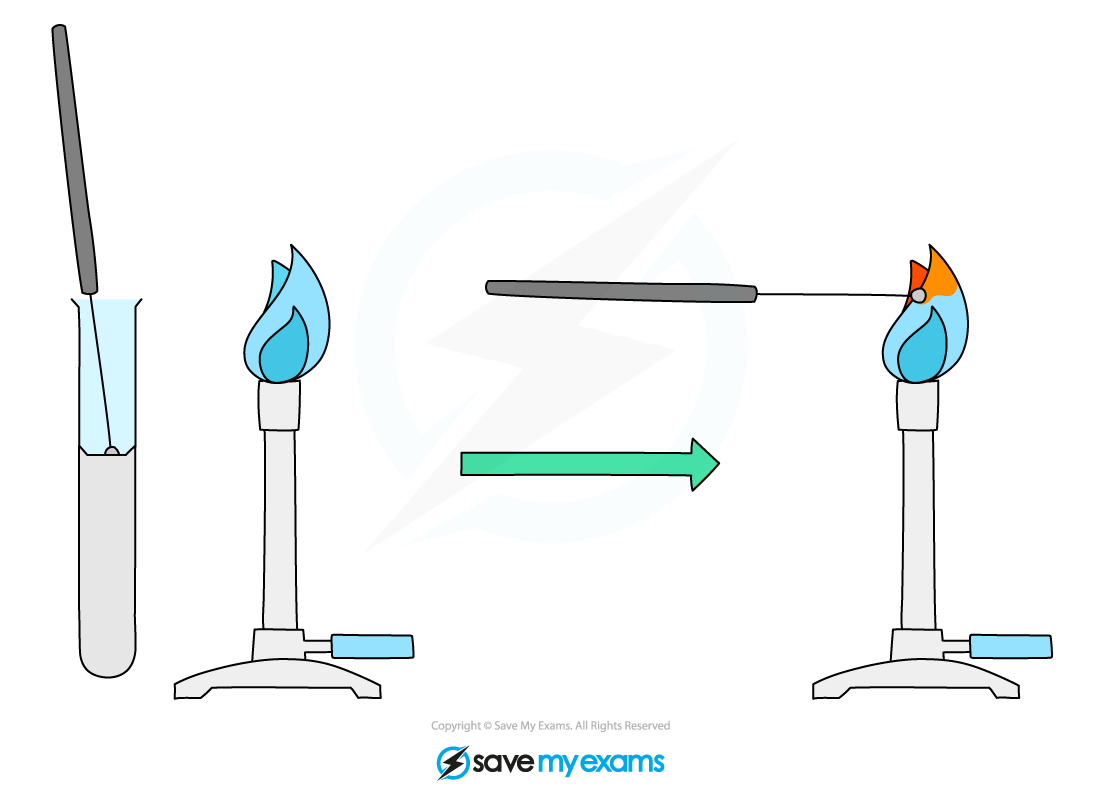Qualitative analysis
1/24
There's no tags or description
Looks like no tags are added yet.
Name | Mastery | Learn | Test | Matching | Spaced |
|---|
No study sessions yet.
25 Terms
qualitative analysis
used to identify components in a sample
use sampling techniques to ensure that samples used for analysis are representative
will identify any variations in the bulk of the material that is represented in the analysis

flame test for metal ions
light bunsen burner
clean nichrome wire with HCl
put nichrome wire in the flame to clean
collect concentrated chemical solution on nichrome wire and place in flame
record colour of flame
flame test barium
pale-green
flame test calcium
yellow-red
flame test copper
green-blue
flame test lithium
red
flame test sodium
orange
flame test potassium
lilac
Emission spectrum
black background with coloured lines
shows the frequency of light that an element will send out
How to identify an element on the emission spectrum
look at emission spectrum and compare data
if only some line match its not the element present
if the lines match up but have extra lines there could be multiple elements
advantages of emission spectrum
can detect very small amounts of a substance (greater sensitivity)
greater accuracy
greater speed
can detect different elements in mixtures
Detecting cations
precipitation can be used to determine which ions are in a compound
precipitate
insoluble solid which forms when two solutions are mixed
How to detect cations in solution
add 10 drops of compound to a test tube
add a small volume of sodium hydroxide to compound until precipitate forms
record colour of precipitate
add more sodium hydroxide to see if the precipitate is soluble
record whether precipitate is insoluble/soluble
metal cations react with hydroxide ions
ion copper (cu2+)
precipitate colour = light blue
insoluble
ion iron (Fe2+)
precipitate colour= green
insoluble
ion iron (Fe3+)
precipitate colour = red-brown
insoluble
ion calcium (Ca2+)
precipitate colour = white
insoluble
zinc (Zn2+)
precipitate colour = white
soluble
Detecting anions in a solution
Acidify with dilute nitric acid then add silver nitrate solution
for Sulfate → acidify the add barium chloride/barium nitrate solution
for carbonate → add dilute acid and if bubbles form collect the gas and test with limewater
chloride
white precipitate
Bromide
cream precipitate
Iodide
yellow precipitate
Sulfate
white precipitate
Carbonate
effervescence Co2 gas